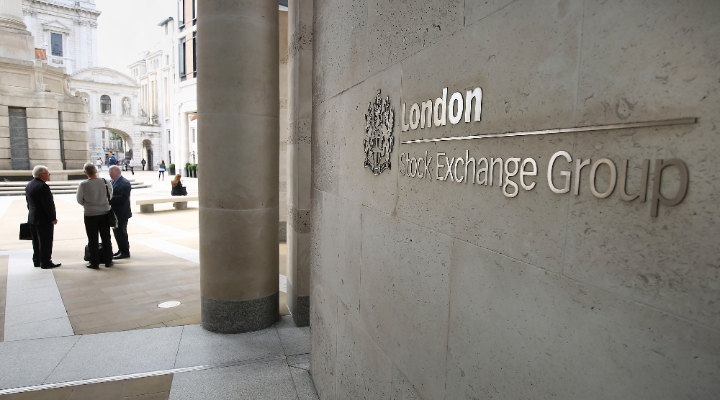
Hindsight brings clarity. That adage particularly holds for bull markets, which cloud all but the most disciplined minds. When animal spirits are strong, so are investment emotions.
By now, the coronavirus era's giddiness – a strange phrase, but it certainly does apply to the investment mindset – has long since passed. The stock and bond markets began their descent almost two years ago in January 2022.
Although equities have staged brief rebounds, their prices remain well below their high-water mark. Bonds, of course, have been shoddier yet. By some measures, they have suffered their steepest losses over the past century.
With that backdrop, let's reflect on how this decade began.
#1: Easy Come, Easy Go
The Federal Reserve is powerful but clumsy. Its ability to control short-term interest rates permits it to stimulate or slow business activity, in a fashion that other government bodies cannot. However, such actions not only affect the general economy, as the Fed's officials desire, but also security prices.
The pattern has reliably transpired. When the Federal Reserve raised interest rates in late 1989, equities declined the next year. Although rate increases during the mid-1990s failed to cool stock prices, thereby leading to Alan Greenspan's famous lament about "irrational exuberance," a renewed effort entering the new millennium presaged the technology stock crisis. The next major interest-rate hikes came during 2007. Once again, equities fell.
Profiting from the Fed's actions is much trickier than my summary suggests. For example, investors who became bearish in 1995, when short interest rates reached 6%, would have missed five years of an historic bull market. On the flip side, although previous bear markets occurred after interest rates had peaked, the recent bear market began before rates had even begun to rise. The mere anticipation of the event triggered the slide.
It is therefore understandable that, by and large, retail shareholders remained fully invested as the bear market commenced. (Less excusable was the mediocre showing of tactical asset-allocation funds, which exist to make such a decision.) Although the downturn was inevitable, its inception date was not. Their mistake lay instead, to repeat Mr. Greenspan’s term, in being irrationally exuberant.
#2: Wall Street Isn’t Always to Blame
The boom brought a host of new "investment opportunities".
1) Cryptocurrencies: admittedly, cryptocurrencies were already in the headlines by the time Covid-19 appeared. But their fame skyrocketed during the lockdown when bitcoin's price grew 11-fold in as many months.
2) Meme stocks: the lockdown fostered a belief (or at least, the hope) that by collectivising via internet forums, everyday investors could outwit, and potentially even outmuscle, their professional counterparts.
3) Robinhood: the brokerage firm for the next generation introduced the nation to "gamification" in investing. No longer was investing a dull but necessary activity. With Robinhood’s platform, it became entertainment.
4) SPACS: Special Purpose Acquisition Companies, or SPACs, have been around since Bill Clinton's presidency. But their moment did not arrive until the pandemic era, when their assets doubled within 12 months.
5) NFTs: to be honest, I never paid nonfungible tokens a lick of attention, as they seemed too absurd to warrant the effort. But others did, even going to the effort of issuing marketplace forecasts.
Today, each of these five items may accurately be called busts. While cryptocurrencies are around to stay, their prices nonetheless are down 60% from their peak.
Through that time, Robinhood has also shed much of its user base, and its Investor Index has lagged Nasdaq's benchmarks. The remaining three assets, to use the word liberally, appear to be confined to the dustbins of history.
Among this group, only SPACs come from inside Wall Street. The other innovations were promoted either by outside entrepreneurs or, in the case of meme stocks, by retail investors themselves.
#3: Bigger is (Sometimes) Better
At negative 15%, the average cumulative total return for US mutual funds/exchange-traded funds since January 2021 far exceeds the performance of the upstarts.
The reason for the disparity is simple. During bull markets, investors often take on more risk. For established investment providers such as Vanguard, Schwab [SCH], BlackRockp [BLK], and Fidelity, that behavior carries a threat as well as an opportunity. Yes, bull markets can bring new customers, but the bear markets that ensue – and they always do ensue—can dislodge existing customers who were insufficiently prepared. And the giants have a great many existing clients!
Consequently, they tend to be careful. That is not to say that the leading fund companies will not on occasion err, by offering a hot product at the wrong time. But for the most part, they assume few additional risks. After all, the business reward for being successfully aggressive is considerably smaller than the penalty that comes from overstepping caution.
Not so for the outsiders. Those who lack customer assets have everything to gain by proceeding boldly, with nothing to lose other than their seed capital. Consequently, they are likely to care more about their promises than about the possibility that such pledges will go unfulfilled. Money talks – and the money for investment-industry rookies comes from moving boldly, without great concern for what might follow.
Conclusion
Low interest rates breed lax investment habits. Most shareholders realise the good times will eventually cease. However, because investment sentiment is contagious, it can be difficult to reconcile the head with the heart.
At such times, investment providers can exert great influence. Those who sell into the prevailing emotion can attract a great many assets – far more than they can capture under normal circumstances. The question then becomes if they can retain those customers when conditions change. Regrettably, the answer usually is "no."
The most recent experience appears to have been no exception.
John Rekenthaler is director of research at Morningstar




























